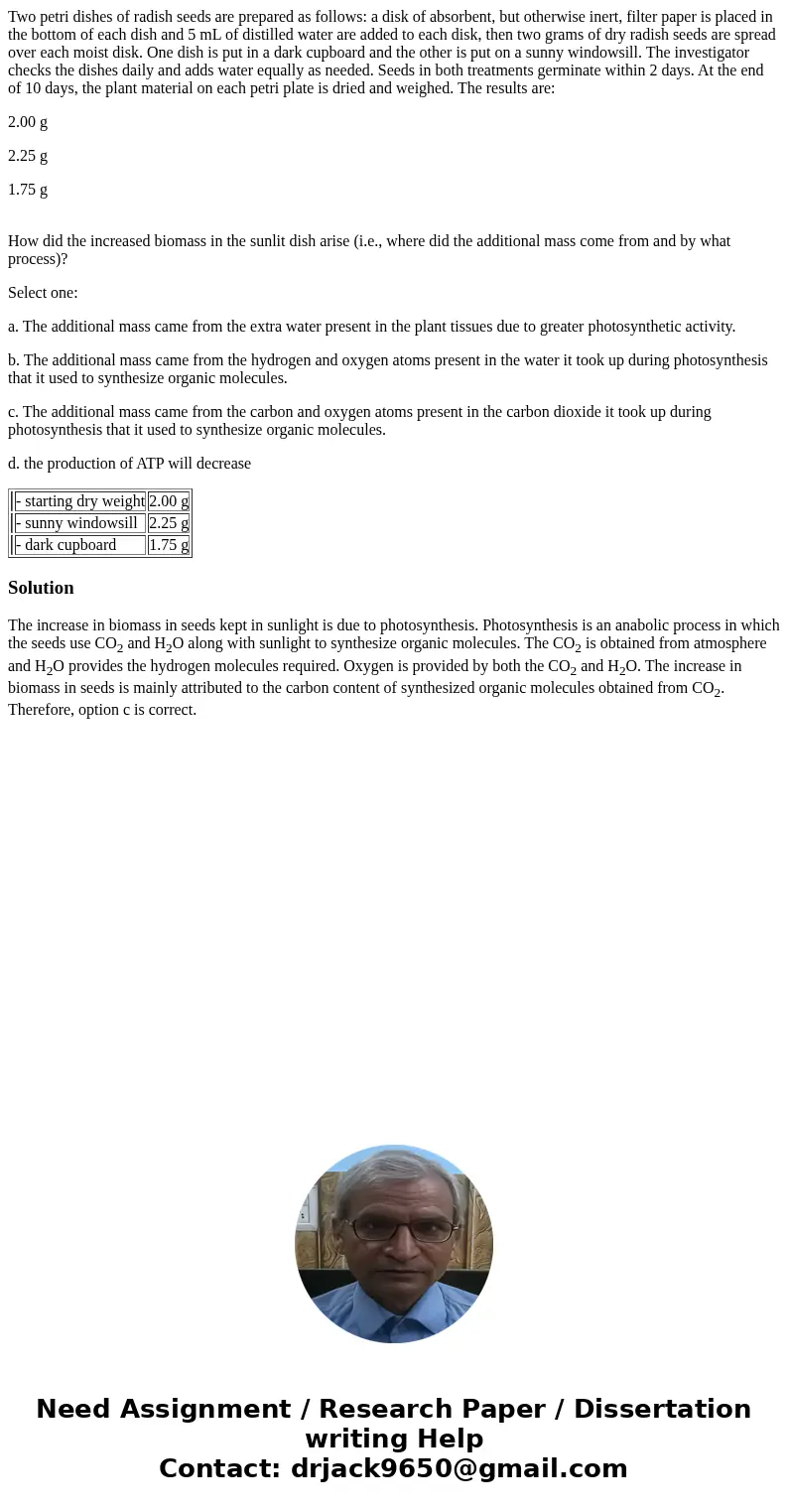Two petri dishes of radish seeds are prepared as follows a d
Two petri dishes of radish seeds are prepared as follows: a disk of absorbent, but otherwise inert, filter paper is placed in the bottom of each dish and 5 mL of distilled water are added to each disk, then two grams of dry radish seeds are spread over each moist disk. One dish is put in a dark cupboard and the other is put on a sunny windowsill. The investigator checks the dishes daily and adds water equally as needed. Seeds in both treatments germinate within 2 days. At the end of 10 days, the plant material on each petri plate is dried and weighed. The results are:
2.00 g
2.25 g
1.75 g
How did the increased biomass in the sunlit dish arise (i.e., where did the additional mass come from and by what process)?
Select one:
a. The additional mass came from the extra water present in the plant tissues due to greater photosynthetic activity.
b. The additional mass came from the hydrogen and oxygen atoms present in the water it took up during photosynthesis that it used to synthesize organic molecules.
c. The additional mass came from the carbon and oxygen atoms present in the carbon dioxide it took up during photosynthesis that it used to synthesize organic molecules.
d. the production of ATP will decrease
| - starting dry weight | 2.00 g | |
| - sunny windowsill | 2.25 g | |
| - dark cupboard | 1.75 g |
Solution
The increase in biomass in seeds kept in sunlight is due to photosynthesis. Photosynthesis is an anabolic process in which the seeds use CO2 and H2O along with sunlight to synthesize organic molecules. The CO2 is obtained from atmosphere and H2O provides the hydrogen molecules required. Oxygen is provided by both the CO2 and H2O. The increase in biomass in seeds is mainly attributed to the carbon content of synthesized organic molecules obtained from CO2. Therefore, option c is correct.

 Homework Sourse
Homework Sourse